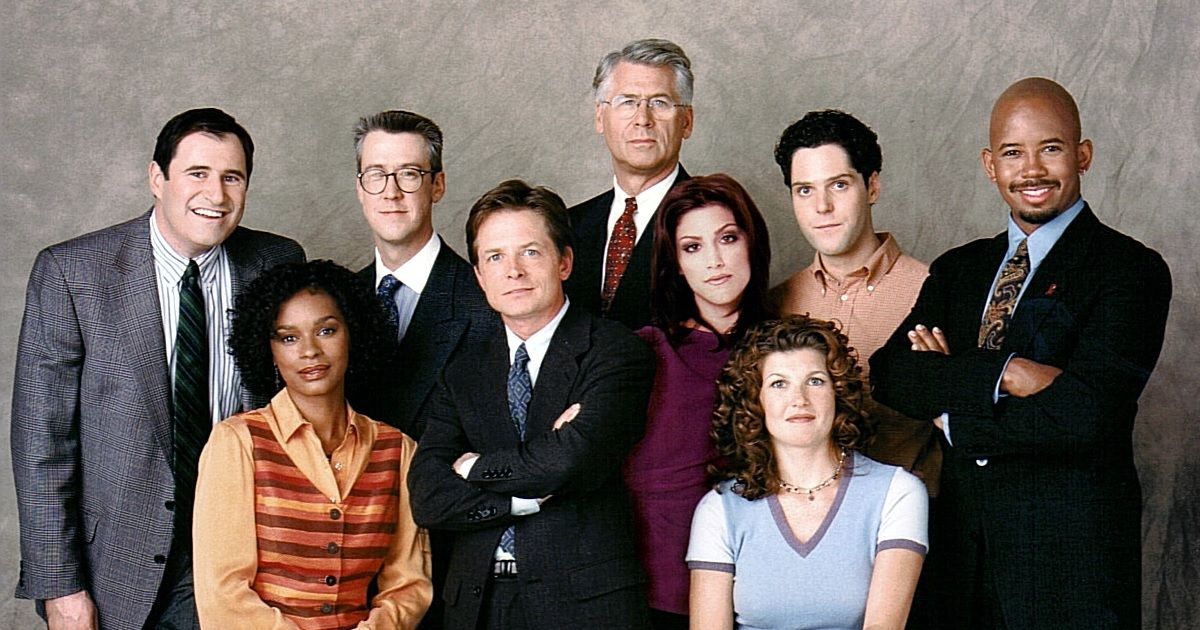Michael J. Fox Net Worth: The $65 Million Fortune, Parkinson's Battle, and the Search for a Lost Guitar
The Price of Fame, Persistence, and an Unbreakable Legacy in Finance and Philanthropy
There are actors who define a decade—and then there’s Michael J. Fox, whose charm, talent, and pitch-perfect comedic timing made him a household name before he was old enough to rent a car. From the high-stakes politics of Family Ties to the time-traveling rock-and-roll of Back to the Future, he didn’t just star in hits—he became a permanent fixture in global pop culture.
But behind the enduring fame was a far harder reality: a life-changing Parkinson’s diagnosis at the height of his career. It forced a pivot, shifting his focus from Hollywood blockbuster earnings to a profound new form of financial and social impact.
| Michael J. Fox: Net Worth at a Glance | |
| Estimated Net Worth (2025): | $65 Million |
| Primary Sources of Wealth: | Film and TV Residuals, Book Royalties, Real Estate, Strategic Investments |
| Key Legacy: | The Michael J. Fox Foundation (Over $1.75 Billion raised for Parkinson's research) |
Now 64, Fox commands an estimated $65 million net worth. It is a sum meticulously built through decades of sitcom salaries, lucrative science-fiction sequels, voice roles, and four bestselling memoirs. Yet, what sets his fortune apart is how it is tied to his enduring legacy as a world-leading activist.
His story is not just an anatomy of a celebrity fortune; it’s about resilience, the quiet financial discipline required to sustain a career amid a life-altering disease, and the quest to turn personal hardship into a foundation that has raised billions. It’s also about the one piece of movie memorabilia—the famed Gibson ES-345 guitar from the "Enchantment Under the Sea" dance—that remains missing, proving that even for one of the world's most beloved stars, some things truly are "Lost to the Future."

Michael J. Fox performs the iconic “Johnny B. Goode” scene as Marty McFly in Back to the Future (1985), one of the most memorable moments in movie history.
Beginnings: A Kid From Canada Who Wouldn't Quit
Born in Edmonton, Alberta, Fox grew up in a military family that moved often. He caught the acting bug young, landing his first major role at 15. By 18, he’d moved to Los Angeles with little more than ambition. Money was tight, and he slept on friends’ couches until work began to come in.
Forced to change his name due to Screen Actors Guild rules, he added the “J” as a nod to actor Michael J. Pollard. That simple tweak became part of a name Hollywood wouldn’t forget.

Michael J. Fox with his Family Ties co-stars in the hit 1980s sitcom that made him a household name.
Family Ties and Fast Fame
In 1982, Fox landed the role that made him a household name: Alex P. Keaton in Family Ties. Meant to be a supporting character, Fox’s performance stole the spotlight so quickly that the show was reworked around him.
He won three Emmys and a Golden Globe for the role and met his future wife, actress Tracy Pollan, on set. They married in 1988 and went on to have four children together.
The Back to the Future Era — and a Missing Guitar
It’s hard to overstate what 1985 meant for Michael J. Fox. Already a star on Family Ties, he pulled double duty for months—shooting the sitcom by day and filming Back to the Future deep into the night. The schedule was brutal, but the result was lightning in a bottle.
The movie not only dominated the box office—pulling in more than $380 million globally—but turned Fox into a worldwide sensation. His portrayal of Marty McFly became instantly iconic, spawning two sequels, endless merchandise, and one of the most quoted film lines of all time.
In 2025, Fox surprised fans by launching a public search for the legendary Cherry Red Gibson ES-345 guitar he played during the film’s unforgettable “Johnny B. Goode” performance. The guitar vanished decades ago, and despite efforts to locate it—including a new documentary—it remains lost. Fox quipped it might be “somewhere in the space-time continuum,” or maybe just forgotten in a dusty garage.

Michael J. Fox with his Spin City castmates — the acclaimed political sitcom that earned him multiple Emmy Awards and marked one of his most successful TV roles of the 1990s.
Big Paydays and The Smart Financial Moves That Built a $65 Million Fortune
Michael J. Fox’s career is a blueprint for financial scaling in Hollywood, starting from a modest actor's wage to commanding multi-million dollar paychecks. The financial turning point was Back to the Future.
While his original payday for the 1985 blockbuster was a modest $500,000, the film’s worldwide success guaranteed his future wealth. By the time the sequels were filmed, Fox was one of the biggest stars on the planet, securing an impressive $5 million per film for both Back to the Future Part II and Part III. His total haul from the iconic trilogy alone reached $10.5 million (not including long-term residuals).
The Power of the Sitcom and Syndication Royalties
Beyond film, Fox’s television work provided a consistent, high-value revenue stream.
- Family Ties (1982–1989): This series established his star power, and its enduring popularity ensures steady residual income to this day.
- Spin City (1996–2000): Fox’s salary reached a reported six figures per episode, contributing over $7 million to his career total, not counting syndication. The series gained extra public attention—and a clear line of demarcation—when Fox's Parkinson’s diagnosis forced his departure and he was replaced by Charlie Sheen for the final two seasons.
Fox further diversified his income with lucrative voice acting roles, including the Stuart Little trilogy, Homeward Bound, and Atlantis: The Lost Empire, which together added an estimated $5 million-plus to his total earnings.
The Enduring Revenue Stream of an Author
The final and most personal pillar of his fortune is his literary career. Fox has become a successful author, transparently documenting his battle with Parkinson’s across four best-selling memoirs, with a fifth, Future Boy: Back to the Future and My Journey Through the Space-Time Continuum, just released. His publishing success is estimated to have generated another $3 million to $5 million in royalties and advances.
His recent book tour has shone a new spotlight on his earliest financial regrets. In an October 2025 event, Fox revealed that while he did snag a small, non-valuable brass whale prop from the Family Ties set, he considered himself "stupid" for not taking the iconic Gibson ES-345 guitar from the Back to the Future set, adding regretfully: "I should’ve taken the goddamn guitar." The famed instrument is now the subject of a global hunt and a documentary titled Lost to the Future.
The Final Tally: Discipline and Philanthropy
Altogether, Fox’s career earnings are estimated to have reached $80 million to $100 million. His current personal net worth of $65 million is a reflection of careful long-term planning, a smart real estate portfolio, and his immense charitable giving.
The difference between his gross earnings and his net worth is largely attributed to decades of significant tax payments, real estate portfolio management, and, crucially, the massive, ongoing investment in The Michael J. Fox Foundation. The final number underscores a legacy defined by financial success and a profound commitment to philanthropy.

Michael J. Fox discusses his journey with Parkinson’s disease during a live event — continuing his mission to raise awareness and inspire hope through the Michael J. Fox Foundation.
Parkinson’s, Advocacy, and a Mission Larger Than Fame
Fox was diagnosed with Parkinson’s at just 30, while filming Doc Hollywood. He kept it private for years, only going public in 1998. Rather than stepping back, he stepped up—using his fame to raise awareness and funds.
In 2000, he founded the Michael J. Fox Foundation for Parkinson’s Research, which has now raised over $300 million. It’s the largest nonprofit of its kind in the world and has helped bring multiple therapies to clinical trial.
Despite physical challenges, Fox remains active in media, books, and advocacy. “I fall a lot,” he says. “But that’s just because I’m not afraid to fly.”

Michael J. Fox and wife Tracy Pollan share a quiet moment at home—partners in life, parenting, and the decades-long fight against Parkinson’s disease.
Real Estate: Quiet Spaces for a Public Life
For someone who’s been globally recognized for most of his adult life, Michael J. Fox has always chosen homes that speak to peace, not prestige.
He and wife Tracy Pollan spend most of their time in Manhattan, in a quiet Upper East Side apartment not far from Central Park. It’s the kind of place that doesn’t draw attention—just comfort, routine, and privacy. That’s always been their style.

Michael J. Fox enjoys Christmas at home with his wife Tracy Pollan and their family — a rare glimpse into the actor’s private life away from Hollywood.
In 2007, they bought a summer retreat in Quogue, New York, for $6.3 million. Quogue isn’t trendy or paparazzi-heavy—it’s the Hamptons town you go to if you’re not looking to be seen. The house sits among trees, a short distance from the beach, and offers room to breathe.
Before that, the couple owned a custom-built estate in Sharon, Connecticut, spread across 72 wooded acres. It was designed to be a family escape, and for many years, it was. They sold the property in 2017 for $3.9 million, choosing to simplify as their lifestyle shifted more toward the city.
Fox’s real estate choices—much like the man himself—have always been about intention, not indulgence.

Michael J. Fox accepts an Emmy Award on stage — a moment that reflects both his acclaimed television career and his enduring impact on audiences worldwide.
Awards, Legacy, and What Comes Next
Fox’s trophy shelf includes:
-
5 Primetime Emmys
-
4 Golden Globes
-
2 SAG Awards
-
1 Grammy
-
Officer of the Order of Canada (OC)
In October 2025, his fifth memoir, Future Boy, will look back at the whirlwind of 1985—his year of dual fame as both Marty McFly and Alex P. Keaton. “It’s become a time machine for me,” he writes. “But unlike the DeLorean, there’s room for everyone to come along.”
Over the years, Michael J. Fox has shared the screen and creative space with some of the most visionary names in entertainment. The Frighteners, directed by future Lord of the Rings mastermind Peter Jackson, marked Fox’s last major film role—an eerie, underrated cult hit that showcased his range beyond comedy.
Decades later, fellow Canadian Ryan Reynolds would call Fox his hero, praising his resilience with the words: “He falls a lot because he's unafraid to fly.” That sentiment sums up Fox’s entire journey—from teen idol to global advocate, from sci-fi legend to real-life fighter. His story isn't just one of fame or fortune. It's one of purpose.
Michael J. Fox Frequently Asked Questions
What stage of Parkinson’s is Michael J. Fox in?
Advanced, but he remains mobile and publicly active, though with assistance.
What is the health condition of Michael J. Fox?
He continues to live with Parkinson’s and has adjusted his career to focus on writing and advocacy.
How long can Michael J. Fox live with Parkinson’s?
He’s outlived most expectations—over 30 years since his diagnosis at age 30.
What did Michael J. Fox’s son do for him?
His son Sam has helped manage some public appearances and works with the foundation behind the scenes.
Curious About Net Worth? Finance Monthly Has You Covered!
From billionaires and business leaders to your favorite actors, athletes, and entrepreneurs like Paris Jackson, we meticulously track the numbers behind the names. We explore not just the figures, but also how fortunes are built, managed, and impacted by unique life journeys.
Explore our full collection of net worth profiles to stay up to date on who’s rising, who’s spending, and how wealth is made and managed in 2025.
👉 Browse all our latest net worth stories HERE.














